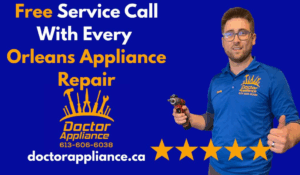
The Crash
On April 7, while riding on Beechwood to get to work, I suddenly ended up in an ambulance with no recollection of how I got there. According to the police and/or paramedics, an OC Transpo driver had given their right of way to a driver turning left on Acacia. The driver turned without ensuring that nobody was riding on the bike lane, and I got left-hooked. My first reflex was to move my arms and toes. Luckily, they were moving pain-free, which made me calm down since I was not paralyzed. To the surprise of every first responder and healthcare professional I saw that day, I ended up with a couple of lacerations on my face and a broken jaw. I wanted to share some of the reflections I’ve made since the incident.
What Next?
The first question people asked, and one that was resolved pretty quickly, was “Will I continue to ride?” Rationally, the risk remains unchanged. Cycling to work has been shown by studies to add more years of life than driving, despite the added risk due to collisions. Rationally, changing that does not make sense. Irrationally, as much as I am more nervous riding where there are cars, the thought of going back to driving around everywhere is nauseating. Once you experience the joy of cycling as a mode of transportation, it is tough to go back. There’s a reason why people ride bikes recreationally; it’s fun. Beyond that, riding in the community has allowed me to get to know the community better. There are several people that I have met riding over the years. I have also noticed significant improvements in my mental and physical health. Cycling for transportation has improved my life too much for me to change. Having your jaw broken is horrible. Having your jaw wired shut is much worse than I had imagined, and there’s a lot of pain and discomfort involved with rehabilitation once the wires come off. That said, if the choice were to break my jaw again or go back to driving everywhere, I would enthusiastically say, “Bring on the wires!”.
Another reflection that I made, which was the subject of my op-ed in the Ottawa Citizen a few weeks ago, is that the city expects people to switch away from cars towards public and active transportation without providing much support to those individuals. Reducing reliance on cars has a significant impact on our ability to build housing, address climate change, maintain a low tax rate, reduce air and plastic pollution, and create a more accessible city. There’s a reason why even conservative politicians like Matt Luloff have endorsed plans like the Orléans Corridor Secondary Plan, which are designed to reduce our reliance on cars. It is simply not sustainable to maintain our current model. Urban design is a technology. As a technology, its adoption will follow the technology adoption life cycle. Suppose we want to cross the chasm and have enough people using active transportation to reap the benefits, we need to support innovators and early adopters while creating an environment that encourages the early majority to adopt the technology. However, the Transportation Master Plan lacks ambition in its proposals, and the timeframe for implementation is unrealistic. We can already see developments being proposed in our community that assume that not everyone will drive. However, if the infrastructure does not support non-drivers, we will end up with further congestion and parking problems. People who use active transportation are part of the solution to many of our city’s issues, and it would be nice if we didn’t ask them to put themselves in danger.
The Rationale
My situation is very privileged. First of all, I chose to ride to work. I could afford to buy a car and park at work. Because of the externalities, I don’t think it would be a moral choice, and I also enjoy having money to spend at local businesses instead of giving it to the car industry and oil and gas companies. I am also a relatively fit middle-aged man with above-average reflexes, thanks to years of martial arts training. I also have a reasonably robust frame, which is probably why I ended up in better condition than all medical professionals would have expected at the Civic Trauma Centre. My employment situation means that I did not experience any loss of income (beyond using sick leave), and our household has excellent medical insurance coverage. I also had a nice spot in my house where I could recover quietly, and a support network that provided me with plenty of soups until I was able to make my own (I’m happy to share recipes with people on liquid diets who want to avoid feeling hungry or lose weight). Several people I see on my commute do not have such privileges. I see many people who don’t have high incomes, have precarious work (such as delivery riders), likely don’t have a home, or appear to have less resilient builds (like women and children). Losing any of the elements above would have made recuperating from this collision much more difficult. Safe active transportation infrastructure is not for people like me, but for people who have no other choice due to disability (I recommend reading When Driving is not an Option by Anna Zivarts) or due to lack of income. They stand to lose a lot more than I do in a collision.
The time since the collision has been brutal for me and my family. However, it did make me realize what I had gained since I started riding for transportation, and it reinforced my resolve to get the active transportation infrastructure we need to address our city’s issues and to build a more inclusive society.













